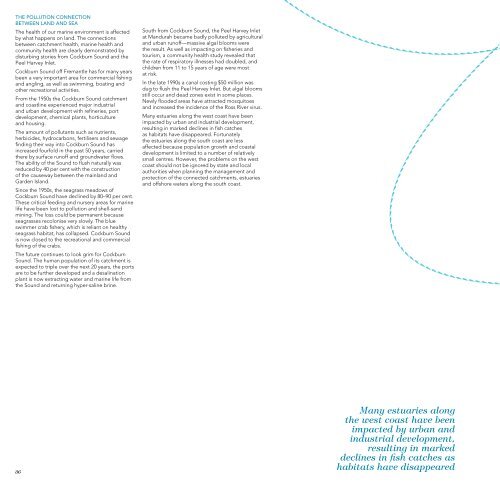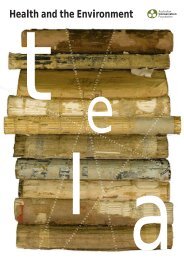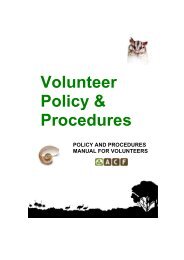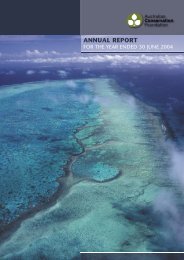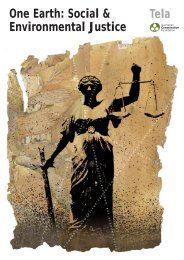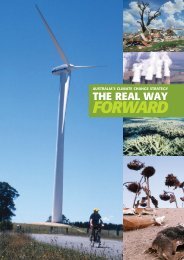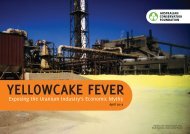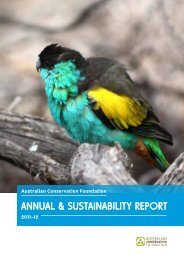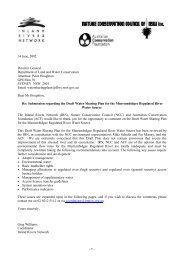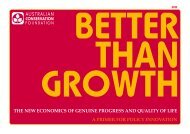Protecting Western Australia's Big Blue Backyard - The Pew ...
Protecting Western Australia's Big Blue Backyard - The Pew ...
Protecting Western Australia's Big Blue Backyard - The Pew ...
- No tags were found...
Create successful ePaper yourself
Turn your PDF publications into a flip-book with our unique Google optimized e-Paper software.
THE POLLUTION CONNECTIONBETWEEN LAND AND SEA<strong>The</strong> health of our marine environment is affectedby what happens on land. <strong>The</strong> connectionsbetween catchment health, marine health andcommunity health are clearly demonstrated bydisturbing stories from Cockburn Sound and thePeel Harvey Inlet.Cockburn Sound off Fremantle has for many yearsbeen a very important area for commercial fishingand angling, as well as swimming, boating andother recreational activities.From the 1950s the Cockburn Sound catchmentand coastline experienced major industrialand urban development with refineries, portdevelopment, chemical plants, horticultureand housing.<strong>The</strong> amount of pollutants such as nutrients,herbicides, hydrocarbons, fertilisers and sewagefinding their way into Cockburn Sound hasincreased fourfold in the past 50 years, carriedthere by surface runoff and groundwater flows.<strong>The</strong> ability of the Sound to flush naturally wasreduced by 40 per cent with the constructionof the causeway between the mainland andGarden Island.Since the 1950s, the seagrass meadows ofCockburn Sound have declined by 80–90 per cent.<strong>The</strong>se critical feeding and nursery areas for marinelife have been lost to pollution and shell-sandmining. <strong>The</strong> loss could be permanent becauseseagrasses recolonise very slowly. <strong>The</strong> blueswimmer crab fishery, which is reliant on healthyseagrass habitat, has collapsed. Cockburn Soundis now closed to the recreational and commercialfishing of the crabs.<strong>The</strong> future continues to look grim for CockburnSound. <strong>The</strong> human population of its catchment isexpected to triple over the next 20 years, the portsare to be further developed and a desalinationplant is now extracting water and marine life fromthe Sound and returning hyper-saline brine.South from Cockburn Sound, the Peel Harvey Inletat Mandurah became badly polluted by agriculturaland urban runoff—massive algal blooms werethe result. As well as impacting on fisheries andtourism, a community health study revealed thatthe rate of respiratory illnesses had doubled, andchildren from 11 to 15 years of age were mostat risk.In the late 1990s a canal costing $50 million wasdug to flush the Peel Harvey Inlet. But algal bloomsstill occur and dead zones exist in some places.Newly flooded areas have attracted mosquitoesand increased the incidence of the Ross River virus.Many estuaries along the west coast have beenimpacted by urban and industrial development,resulting in marked declines in fish catchesas habitats have disappeared. Fortunatelythe estuaries along the south coast are lessaffected because population growth and coastaldevelopment is limited to a number of relativelysmall centres. However, the problems on the westcoast should not be ignored by state and localauthorities when planning the management andprotection of the connected catchments, estuariesand offshore waters along the south coast.Light penetrates more deeply inthe region’s clear waters, allowingextensive and globally significantseagrass meadows to grow atdepths greater than usual© Glen Cowans36Many estuaries alongthe west coast have beenimpacted by urban andindustrial development,resulting in markeddeclines in fish catches ashabitats have disappeared


